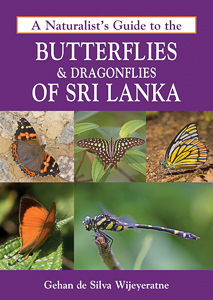 | 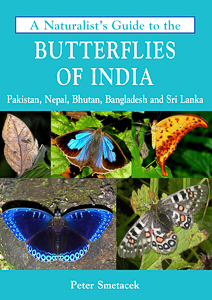 |
These two titles, the first published in 2015 and the second in 2016, follow in the footsteps of the similarly formatted A Naturalist's Guide to the Butterflies of Peninsular Malaysia, Singapore and Thailand, reviewed here. The aim and scope of all these books is the same: to provide the keen naturalist with an authoritative, portable guide to the species most likely to be seen in the regions covered. They are not intended to be comprehensive, so will not enable you to identify every single butterfly or dragonfly you encounter, but nor do they merely illustrate a few representative species from each group. The idea, I think, is to strike a balance between these extremes, so you can confidently put a name to most things you see even if you cannot pin everything down to species level.
Sri Lanka boasts 245 butterflies and 124 dragonflies (including damselflies). Thus, the 148 and 78 respectively chosen for inclusion in A Naturalist's Guide to the BUTTERFLIES & DRAGONFLIES of SRI LANKA actually represent more than three fifths of the total number. The bulk of the book is a guide to these species. For each there is a brief description covering identification, similar species, distribution and larval foodplants (butterflies) or habitat (dragonflies) and one or two mostly good quality (though this is variable) photographs of living insects. There are two main species entries per page. The layout and handy size make it easy for a complete beginner to flick through the book and quickly locate the most likely candidate for an unknown specimen, either in the field or from photographs at home. The species are organised by family and genus, so it is convenient for the more experienced lepidopterist or odonatist too. The author has taken care to draw attention to diagnostic features and my impression is that, despite the necessarily limited number of pictures, the book would enable successful identification of most species, given a good view.
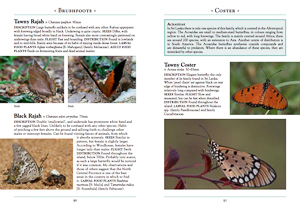 | 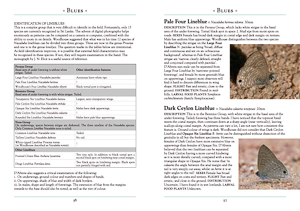 |
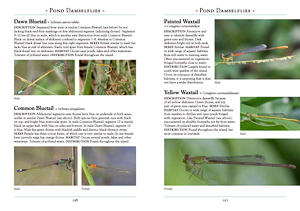 |
A Naturalist's Guide to the BUTTERFLIES OF INDIA has a much more ambitious geographical coverage than the Sri Lankan guide, including the whole of the subcontinent from Pakistan, the Himalayas and Bangladesh to Sri Lanka. India alone has over 1300 species and the neighbouring countries also have rich butterfly faunas, including many endemics. In this case, therefore, the 425 species chosen for inclusion (279 main entries plus a further 146 referenced in the desriptions) represent a much smaller percentage of the whole. Nevertheless, they have been selected carefully and the general naturalist will be able to identify the majority of species encountered.
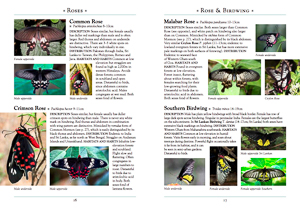 | 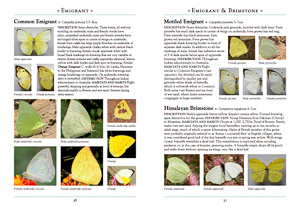 |
 |
By way of testing this, I looked through the book for the 60 species I photographed myself on two trips to India on non-butterfly business. Of these, 56 were included and were readily identifiable from the pictures and information given. I would have found closely related matches for the missing four species but would have been aware they were not correct identifications. For those who are happy being able to place most of what they see on a foreign trip - as I am with plants, for example - this is very satisfactory. For the keen butterfly specialist clocking up a tick list it is obviously less so, but these guides were never intended to cater for this. Like the Sri Lankan guide, the book includes a complete checklist of all species in the area covered and opens with an introduction to butterfly classification, biology and adaptation, with special reference to the Indian subcontinent.
My overall impression of this series in general, and these two books in particular, is very favourable. They are well produced, thoughtfully compiled and, though modest, serve the purpose for which they are designed. In the age of the internet and cheap travel, inexpensive, eminently portable guides like these actually make a lot of sense. Building up a comprehensive library of world butterfly books is extremely expensive and for most regions, espeically tropical countries, the definitive guides are bulky and most certainly not the kind of thing you would take into the field (though in the particular case of Sri Lanka there does in fact exist a portable and comprehensive guide, Rajika Gamaje's Illustrated Field Guide to the Fauna of Sri Lanka volume 1 - Butterflies - which has the added merit of including early stages and pictures of the larval foodplants). Using a Naturalist's Guide to get a handle on the butterflies (or dragonflies) of a country and pursuing any unidentified species online is an effective and economical way of working. In this context it is worth mentioning the websites Butterflies of India and Flutters, both of which are very useful complements to field guides and cover most Indian species.
In conclusion, if you are heading for the Indian subcontinent and take an interest in butterflies and/or dragonflies, you will probably want to stick one or both of these little books in your luggage. At the price, they would be worth getting just for the anticipatory pleasure of browsing on the long flight out there!
The books are available through all good book stores, including those that are online.